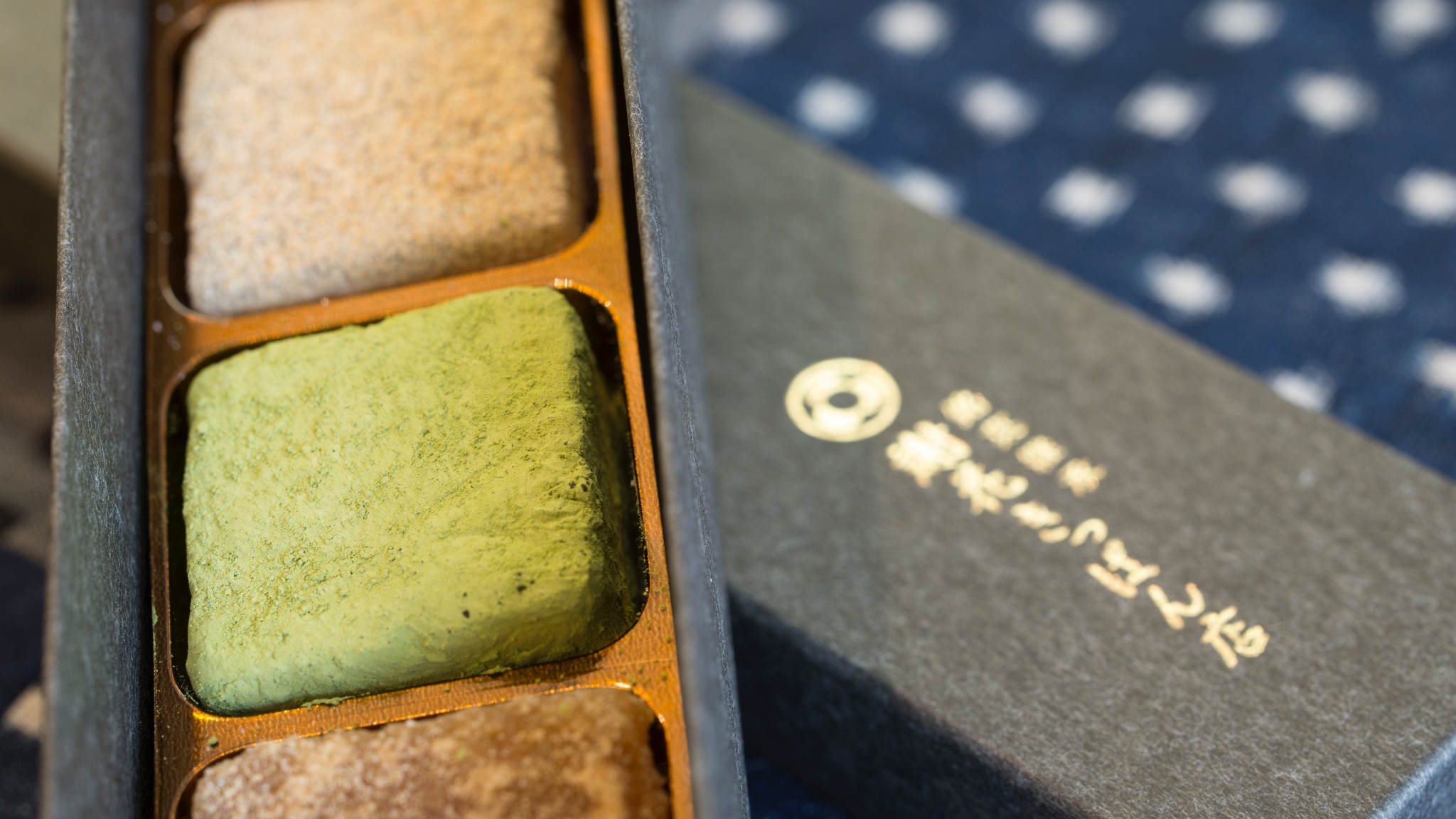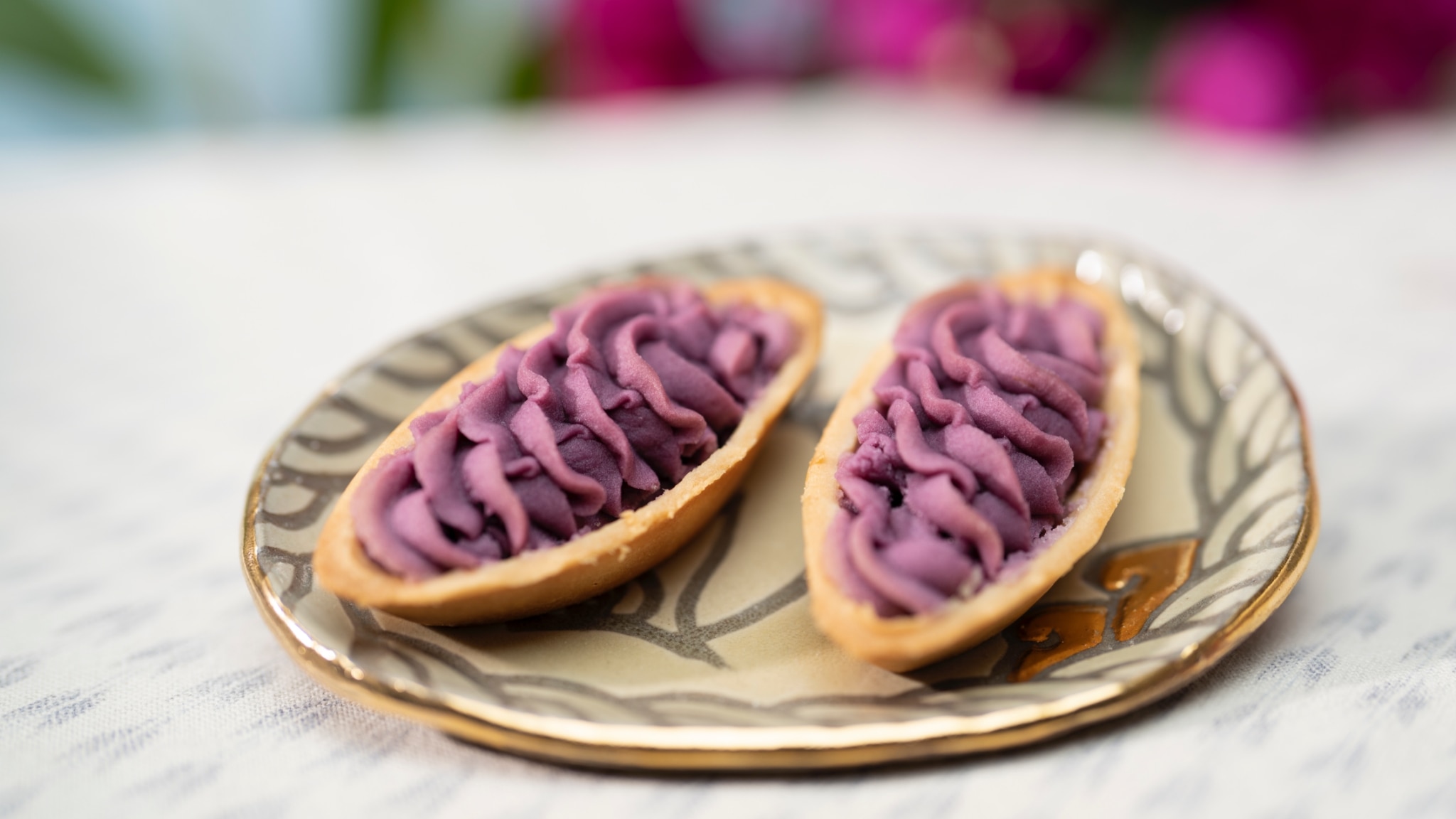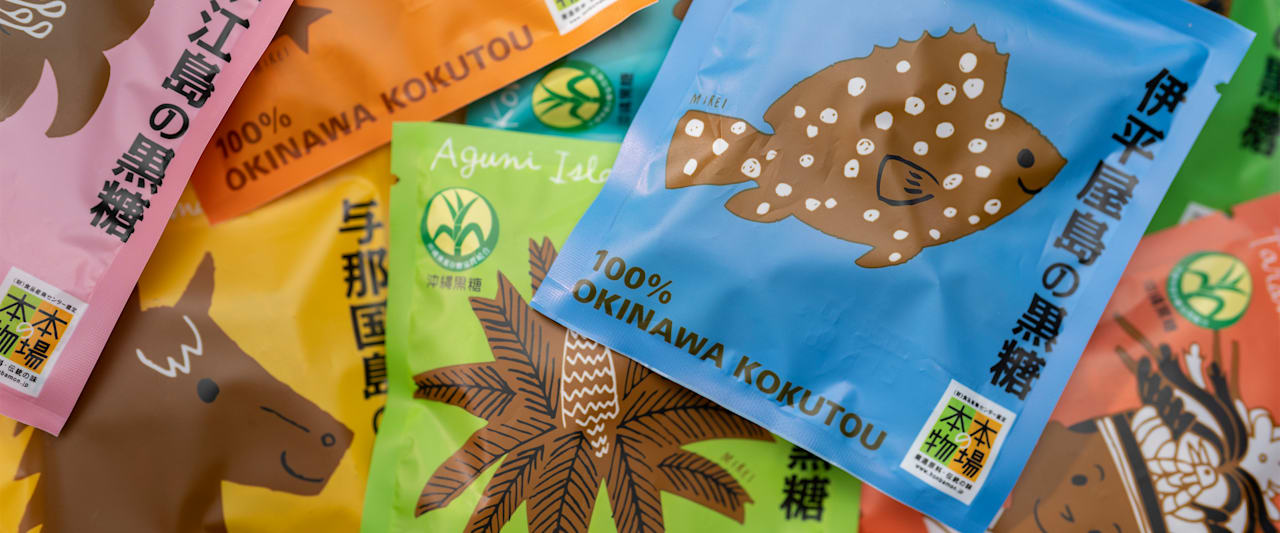Indulge your tastebuds — and take a treat home
Like all great foodie destinations, the cuisine of Okinawa combines the best of local, traditional ingredients, regional influences and a modern international twist.
Sugarcane is one of the key crops on the Okinawan islands, and the main product is the crumbly, flavorful brown sugar locals call kokutou. Created by slowly boiling down cane juice, Okinawan brown sugar is far less processed than the white granulated sugar common in the Western world. Production takes place on several of the Okinawan islands. Each has a unique growing environment with variations in bedrock, soil, water, and weather — so brown sugar, just like wine or coffee, has distinct regional flavors. You can purchase sugar from a single source, or pick up a box of Hachi Shima Kokutou (Eight Island Brown Sugar) to get a taster selection from across the prefecture.

The sugar is used to make a range of very popular candies that your sweet-toothed friends back home will love. Notable is Jahana Kippan’s Tougatsuke, or candied wintermelon, which transforms the astringent staple into a tasty, moreish treat often served with green tea or dessert wine. And while some Okinawan sugar is also used to make rum, the most popular spirit in the islands is awamori. Unlike nihonshu (sake), which is created by brewing Japanese rice, awamori is a product of distillation using long-grained Thai rice and a black koji fungus. Rather than wooden casks, awamori is aged in traditional clay pots, many of which are stored underground in cool limestone caverns. Awamori has an alcohol content similar to whiskey, so is usually drunk with ice and water. There are many different distilleries, and each produces several styles. A great option would be a bottle of Zuisen Blue — the distillery uses deep sea water in the fermentation process to create a unique aroma and flavor, with the salt removed in distillation.

Sweet potatoes are another key part of the traditional Okinawan diet, and provided starchy energy to the working classes when rice was unaffordable. Today beni-imo or purple sweet potato is a popular flavor of ice cream, and the key ingredient in the award-winning Okashigoten Beniimo Tarts. The tarts are perhaps the most famous souvenirs that Japanese visitors take back for family and colleagues after a trip to Okinawa.

Sango Coffee is an island coffee brand that blends caffeine delivery with ocean conservation. Sango is the Japanese word for coral, and the company uses coral rock when slow roasting to produce a mild yet tasty coffee. Sango Coffee has a special license to receive weathered corals that are no longer part of the reef, and a portion of the profits is given to coral reef protection and regeneration in Okinawa. For a complementary nibble, there’s Chinsuko, a popular Okinawan shortbread-like snack that’s available in several flavors. You can also try pairing it with jasmine or turmeric tea when you need a quick energy boost. And as it happens, Okinawa also produces its own jasmine tea, called sanpin-cha; a perfect example of the links between the former Ryukyu Kingdom and China, the tea is normally lightly fermented and fragrant, and makes for a perfect refreshment at any time of the day.
Blue Seal ice cream is an Okinawan favorite. “Born in America, Raised in Okinawa,” it combines American soft serve with unique island flavors. Try the beni-imo soft serve, Shiiquasa Sherbet with Okinawan citrus, or the top-ranked Okinawa salt cookies ice cream. There are numerous stores located across the island, and the products can also be found in many local convenience stores.
And of course, there’s DFS Okinawa Naha City, where you can find even more tasty souvenirs.
















